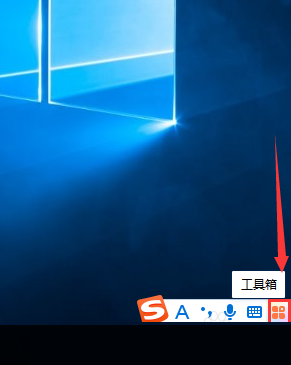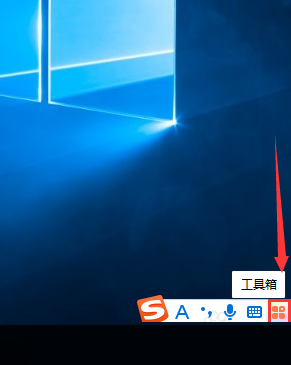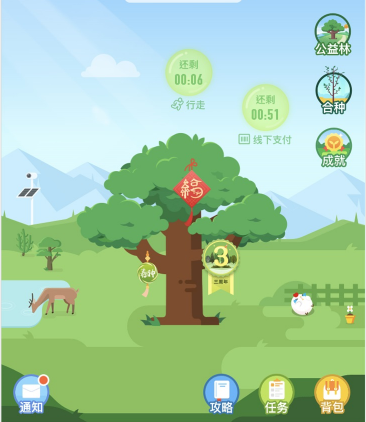上图是页面上展示的测试环境/开发环境版本信息。【相关教程推荐:《angular教程》】
上图表示的是每次提交的Git Commit的信息,当然,这里我是每次提交都记录,你可以在每次构建的时候记录。
So,我们接下来用 Angular实现下效果,React和 Vue同理。
搭建环境
因为这里的重点不是搭建环境,我们直接用 angular-cli脚手架直接生成一个项目就可以了。
Step 1: 安装脚手架工具
npm install -g @angular/cli
Step 2: 创建一个项目
# ng new PROJECT_NAMEng new ng-commit
Step 3: 运行项目
npm run start
项目运行起来,默认监听4200端口,直接在浏览器打开http://localhost:4200/就行了。
此时,ng-commit项目重点文件夹 src的组成如下:
src├── app // 应用主体│ ├── app-routing.module.ts // 路由模块│ .│ └── app.module.ts // 应用模块├── assets // 静态资源├── main.ts // 入口文件.└── style.less // 全局样式
上面目录结构,我们后面会在 app目录下增加 services服务目录,和 assets目录下的 version.json文件。
记录每次提交的信息
在根目录创建一个文件version.txt,用于存储提交的信息;在根目录创建一个文件commit.js,用于操作提交信息。
重点在commit.js,我们直接进入主题:
const execSync = require("child_process").execSync;const fs = require("fs")const versionPath = "version.txt"const buildPath = "dist"const autoPush = true;const commit = execSync("git show -s --format=%H").toString().trim(); // 当前的版本号let versionStr = ""; // 版本字符串if(fs.existsSync(versionPath)) { versionStr = fs.readFileSync(versionPath).toString() + "\n";}if(versionStr.indexOf(commit) != -1) { console.warn("\x1B[33m%s\x1b[0m", "warming: 当前的git版本数据已经存在了!\n")} else { let name = execSync("git show -s --format=%cn").toString().trim(); // 姓名 let email = execSync("git show -s --format=%ce").toString().trim(); // 邮箱 let date = new Date(execSync("git show -s --format=%cd").toString()); // 日期 let message = execSync("git show -s --format=%s").toString().trim(); // 说明 versionStr = `git:${commit}\n作者:${name}<${email}>\n日期:${date.getFullYear()+"-"+(date.getMonth()+1)+"-"+date.getDate()+" "+date.getHours()+":"+date.getMinutes()}\n说明:${message}\n${new Array(80).join("*")}\n${versionStr}`; fs.writeFileSync(versionPath, versionStr); // 写入版本信息之后,自动将版本信息提交到当前分支的git上 if(autoPush) { // 这一步可以按照实际的需求来编写 execSync(`git add ${ versionPath }`); execSync(`git commit ${ versionPath } -m 自动提交版本信息`); execSync(`git push origin ${ execSync("git rev-parse --abbrev-ref HEAD").toString().trim() }`) }}if(fs.existsSync(buildPath)) { fs.writeFileSync(`${ buildPath }/${ versionPath }`, fs.readFileSync(versionPath))}上面的文件可以直接通过 node commit.js进行。为了方便管理,我们在 package.json上加上命令行:
"scripts": { "commit": "node commit.js"}那样,使用 npm run commit同等 node commit.js的效果。
生成版本信息
有了上面的铺垫,我们可以通过 commit的信息,生成指定格式的版本信息version.json了。
在根目录中新建文件version.js用来生成版本的数据。
const execSync = require("child_process").execSync;const fs = require("fs")const targetFile = "src/assets/version.json"; // 存储到的目标文件const commit = execSync("git show -s --format=%h").toString().trim(); //当前提交的版本号,hash 值的前7位let date = new Date(execSync("git show -s --format=%cd").toString()); // 日期let message = execSync("git show -s --format=%s").toString().trim(); // 说明let versionObj = { "commit": commit, "date": date, "message": message};const data = JSON.stringify(versionObj);fs.writeFile(targetFile, data, (err) => { if(err) { throw err } console.log("Stringify Json data is saved.")})我们在 package.json上加上命令行方便管理:
"scripts": { "version": "node version.js"}根据环境生成版本信息
针对不同的环境生成不同的版本信息,假设我们这里有开发环境 development,生产环境 production和车测试环境 test。
major.minor.patch,如:1.1.0开发环境版本信息是 major.minor.patch:beta,如:1.1.0:beta测试环境版本信息是 major.minor.path-data:hash,如:1.1.0-2022.01.01:4rtr5rg方便管理不同环境,我们在项目的根目录中新建文件如下:
config├── default.json // 项目调用的配置文件├── development.json // 开发环境配置文件├── production.json // 生产环境配置文件└── test.json // 测试环境配置文件
相关的文件内容如下:
// development.json{ "env": "development", "version": "1.3.0"}// production.json{ "env": "production", "version": "1.3.0"}// test.json{ "env": "test", "version": "1.3.0"}default.json根据命令行拷贝不同环境的配置信息,在 package.json中配置下:
"scripts": { "copyConfigProduction": "cp ./config/production.json ./config/default.json", "copyConfigDevelopment": "cp ./config/development.json ./config/default.json", "copyConfigTest": "cp ./config/test.json ./config/default.json",}Is easy Bro, right?
整合生成版本信息的内容,得到根据不同环境生成不同的版本信息,具体代码如下:
const execSync = require("child_process").execSync;const fs = require("fs")const targetFile = "src/assets/version.json"; // 存储到的目标文件const config = require("./config/default.json");const commit = execSync("git show -s --format=%h").toString().trim(); //当前提交的版本号let date = new Date(execSync("git show -s --format=%cd").toString()); // 日期let message = execSync("git show -s --format=%s").toString().trim(); // 说明let versionObj = { "env": config.env, "version": "", "commit": commit, "date": date, "message": message};// 格式化日期const formatDay = (date) => { let formatted_date = date.getFullYear() + "." + (date.getMonth()+1) + "." +date.getDate() return formatted_date;}if(config.env === "production") { versionObj.version = config.version}if(config.env === "development") { versionObj.version = `${ config.version }:beta`}if(config.env === "test") { versionObj.version = `${ config.version }-${ formatDay(date) }:${ commit }`}const data = JSON.stringify(versionObj);fs.writeFile(targetFile, data, (err) => { if(err) { throw err } console.log("Stringify Json data is saved.")})在 package.json中添加不同环境的命令行:
"scripts": { "build:production": "npm run copyConfigProduction && npm run version", "build:development": "npm run copyConfigDevelopment && npm run version", "build:test": "npm run copyConfigTest && npm run version",}生成的版本信息会直接存放在 assets中,具体路径为 src/assets/version.json。
结合 Angular 在页面中展示版本信息
最后一步,在页面中展示版本信息,这里是跟 angular结合。
使用 ng generate service version在 app/services目录中生成 version服务。在生成的 version.service.ts文件中添加请求信息,如下:
import { Injectable } from "@angular/core";import { HttpClient } from "@angular/common/http";import { Observable } from "rxjs";@Injectable({ providedIn: "root"})export class VersionService { constructor( private http: HttpClient ) { } public getVersion():Observable { return this.http.get("assets/version.json") }} 要使用请求之前,要在 app.module.ts文件挂载 HttpClientModule模块:
import { HttpClientModule } from "@angular/common/http";// ...imports: [ HttpClientModule],之后在组件中调用即可,这里是 app.component.ts文件:
import { Component } from "@angular/core";import { VersionService } from "./services/version.service"; // 引入版本服务@Component({ selector: "app-root", templateUrl: "./app.component.html", styleUrls: ["./app.component.less"]})export class AppComponent { public version: string = "1.0.0" constructor( private readonly versionService: VersionService ) {} ngOnInit() { this.versionService.getVersion().subscribe({ next: (data: any) => { this.version = data.version // 更改版本信息 }, error: (error: any) => { console.error(error) } }) }}至此,我们完成了版本信息。我们最后来调整下 package.json的命令:
"scripts": { "start": "ng serve", "version": "node version.js", "commit": "node commit.js", "build": "ng build", "build:production": "npm run copyConfigProduction && npm run version && npm run build", "build:development": "npm run copyConfigDevelopment && npm run version && npm run build", "build:test": "npm run copyConfigTest && npm run version && npm run build", "copyConfigProduction": "cp ./config/production.json ./config/default.json", "copyConfigDevelopment": "cp ./config/development.json ./config/default.json", "copyConfigTest": "cp ./config/test.json ./config/default.json"}使用 scripts一是为了方便管理,而是方便 jenkins构建方便调用。对于 jenkins部分,感兴趣者可以自行尝试。
更多编程相关知识,请访问:编程入门!!
以上就是Angular怎么结合Git Commit进行版本处理的详细内容,更多请关注php中文网其它相关文章!











































































